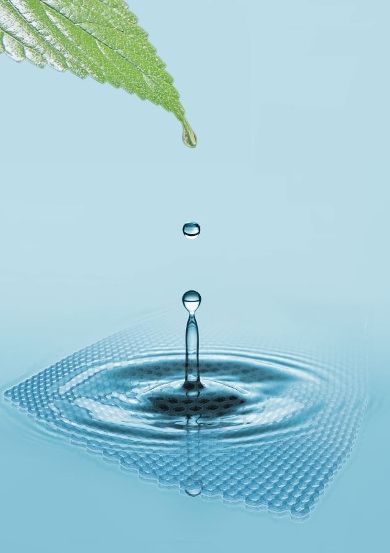New Research Shows That Graphene is Hydrophilic – What Does That Change?
Published on by Water Network Research, Official research team of The Water Network in Academic
Graphene floating on water does not repel water, as many researchers believe, but rather attracts it.
This has been demonstrated by chemists Liubov Belyaeva and Pauline van Deursen and their supervisor Grégory F. Schneider. Publication in Advanced Materials.
 Graphene is made up of the same material as graphite – found in pencils for example – which is why it was assumed for a long time that, like graphite, graphene is water repellant.
Graphene is made up of the same material as graphite – found in pencils for example – which is why it was assumed for a long time that, like graphite, graphene is water repellant.
A key difference from graphite is that graphene is no more than a single atom thick.
Important for biosensors
The studies on graphene gave rise to differing ideas about its wetting properties. The Leiden researchers have now discovered that the surface of graphene on water, provided it is clean and smooth, is hydrophilic. In other words, graphene in water attracts water.
Graphene applications
This insight is very significant for the future applications of graphene. Its thin atomic layer of carbon atoms, arranged in a honeycomb structure, make the material suitable for use in biosensors to decode DNA.
This ultra-thin material can also be used in sensors, water filtration and membranes of fuel cells. In all these cases, a graphene layer is exposed to water on both sides.
On a layer of water
For a long time, graphene was believed to be hydrophobic, or water repellant. The researchers assume that this is because graphene is generally produced on a metal surface and is later transferred to a solid support such as a silicon wafer. During this transfer process, however, the graphene can become damaged or contaminated, which can influence the wetting behaviour.
Curvature of a droplet
To determine whether or not the surface of an intact layer of graphene is hydrophilic, a droplet of water has to be introduced onto the layer. It is then possible to determine from the curvature of the droplet whether the surface is water repellent, just like a raincoat, or whether it attracts water. So much for the theory, because in practice such a droplet will immediately tear the thin graphene layer, resulting in cracks, after which there is not much left to measure.
Imitating water
The researchers resolved this problem by using ice or hydrogel instead of water as the support layer. Ice and hydrogel are much stronger and are good imitators of water. The researchers were then able to introduce minuscule droplets of water onto the graphene and measure the contact angle between the graphene surface and the outside of the droplet.
They also repeated the measurements using other liquids with a different polarity. They were then able to determine that all molecular interactions of the underlying water are felt by the water molecules in the droplet above. This complete transparency is the consequence of graphene's extreme thinness, and it explains why graphene is hydrophilic on water.
A complete change in view
This discovery has a great impact on applications of graphene in sensors, water filtration, and membrane-based fuel cells, all of which feature graphene exposed to water. Developers will have to consider a completely different starting point, namely that the graphene they work with is not hydrophobic, but hydrophilic.
Source: University of Leiden
Read full paper ' Hydrophilicity of Graphene in Water through Transparency to Polar and Dispersive Interactions ' HERE
Media
Taxonomy
- Treatment
- Hydrography
- water treatment
- Graphene